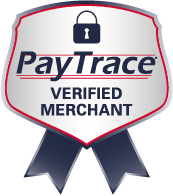SEO and Results Pages
Search engine optimization (SEO) has been around for as long as search engines, and in all that time the practice has been tied to “search engine results pages” (SERPs). As a result, SEO marketing has always been the primary method to get to the top of SERPs.
The problem with this, however, was that it meant SEO had no directly measureable impact on revenue. The disconnect between search optimization and a company’s bottom-line meant that return on investment (ROI) was not guaranteed, but based on a numbers game.
The game said that if we increase web traffic by X%, we should expect to increase our conversions by some factor of X% as well.
Today, with widely-evolving algorithms from search engines phasing out the success of previous SEO tactics, optimization is gradually expanding its role beyond visibility and ranking.
Refined Keyword Targeting
As our clients know, a primary success tactic in SEO is keyword targeting, and one of the most effective strategies of keyword targeting is to focus on “long-tail” (multiple-word) keywords, guaranteeing lower bounce rates, higher conversion, and everything-in-between thanks to being able to analyze our search user’s intent.
This long-tail concept can be broadened to apply to keyword targeting in the various types of user searches including:
- Navigational search – When users on search engines are looking for direction rather than for a specific piece of information, they perform a navigational search to get an idea where to get the information they need. In this case, in order to be found, clients should use broad keywords that are targeted on content focusing on brand awareness and visibility.
- Informational search – A bit deeper into the visitors’ journey, users search for something specific in order to get more details about what they want to acquire. Exact term keywords and some long-tail keyword targeting come into play here.
- Transactional search – Used by visitors ready to perform transactions, long-tail keywords aligned with “purchase intent” words are used in this stage.
“Funnel Linking”
While SEO hasn’t changed much since the inception of SEO– just a few tweaks and adjustments primarily due to designers trying to game the system, that doesn’t mean you can’t innovate.
For instance, any blogs or other articles that you optimize for navigational searches don’t need to be separate from informational or transactional searches. You can connect their dots by making them relevant to each other. For instance, combining a call-to-action designed for one type of search with another type used for a different search and then linking them together can boost your results.
This “linking funnel” achieves a few things for optimization:
- Better keyword targeting (CTAs with links can contain targeted or context-building keywords)
- A more coherent internal link structure for search engine crawlers
- Better overall context for the website and the subject matter it covers, thanks to the above keywords approach
Targeted Visibility
SEO has matured from being just a bait and link game to being a part of your inbound strategy, with a much more direct influence on your bottom-line.
The benefits of this funnel linking becomes clear when you put yourself in your customers’ shoes.
Imagine a prospect conducting a navigational search. This prospect will find your content in SERPs, then will read it and find your CTA inside it to access additional material on the same topic. This helps push your customer down your sales funnel.
Regardless of the type of search your prospects are doing, as long as your keyword targeting and funnel-linking are aligned with your customer’s journey, your prospects will discover a convenient way to find more valuable information and eventually make the decision to purchase from your business.
Indeed, SEO has gone from search engine optimization to search experience optimization. As an integral part of the digital consumer’s journey, search is nearly as inevitable as purchase – even in B2B companies.
SEO will continue to play an important role online, especially now that it’s about creating more than just visibility, but it will be a streamlined, improved search experience.
Conclusion
In summary, SEO is increasingly becoming tied to User Experience (UX) development and to conversion optimization: practices that can have a direct impact on your business’s bottom-line.
For more on inbound internet marketing ideas, visit http://blog.dbcdigital.com/blog-0/bid/183593/Can-I-Do-My-Own-Inbound-Marketing
Otherwise, to learn more, give us a call at (303) 357-5757 or send us an email at dbc@dbcdigital.com
Greg Sherwood
DBC Digital



